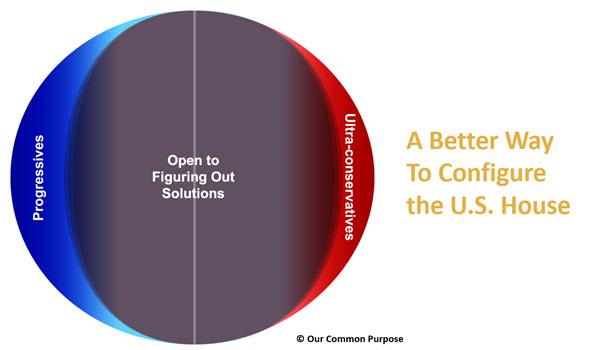House Could Take the Better Way
Aug. 20, 2023
The U.S. House of Representatives once again finds itself at the precipice.
It showed the best of itself in May by working through its differences to approve an increase in the nation’s debt ceiling, with nearly equal support from both sides of the aisle. Then in July it rather quickly reverted to the worst of itself, bogging down in a partisan showdown over next year’s military budget.
Now with September fast approaching, the House is staring at a series of other appropriations bills that must be approved before the new budget year begins Oct. 1. The chamber recessed for August without resolving the suddenly contentious funding for the Agriculture Department. Eight more “must-pass” appropriations bills are yet to be considered by the full chamber. September promises to be ugly.
The contrast between the House at its worst and at its best suggests there are two different ways the very same assembly could be configured.
The first we all know. A chamber cleaved down the middle between two sides constantly at war, the Republicans now owning a numerical advantage so slight there’s no room for defectors. This is the version on full display in the showdown over the military budget. 
The second could be. Each side has its extreme faction, the so-called hard left and far right, that aren’t going to budge. They are outnumbered, however, by a body of lawmakers from both sides of the aisle who while holding differing political persuasions are committed to find a way forward. This coalition carried the day by a large margin, 314-117, on debt ceiling relief.
At the middle of this teeter-totter are 77 center-right Republicans affiliated with one or more of three House groups known as the Problem Solvers Caucus, the Republican Governance Group and the Main Street Caucus.
The center-rightists pride themselves on being pragmatists. Listen to what others have to say. Work out what one can get and has to give in return. Find the votes to get it done. Move on.
Rep. Dusty Johnson of South Dakota, chairman of the Main Street Caucus, has described his group as “pragmatic conservatives who actually care about getting to work.” The caucus overlaps with the Republican Governance Group. The website of its chairman, Rep. David Joyce of Ohio, adds that members “carefully consider policy stances and aim to make a difference rather than pushing partisan noise.”
They come to this either because deep-down they believe it’s the right approach or in some cases for the pragmatic reason that they represent a swing district.
They find themselves in either an enviable or difficult position. Sway in one direction, they line up in solidarity with their ultraconservative colleagues to push through highly charged partisan showdowns. Sway back in the other direction, they collaborate with moderate Democrats to pass legislation that appeals across the aisle.
There’s little question in my mind which of these options is preferred by most Americans. They don’t want to perpetuate the divisive nonsense. They want it solved.
In poll after poll conducted over the past three years by Our Common Purpose, a representative sampling of voters nationwide repeatedly express hope for something better from our elected officials. Asked in the most recent of these surveys whether we should fight it out or work it out on controversial legislation, a whopping 93 percent said work it out.
The center-rightists are actively engaged in reaching across the aisle, for instance in holding a recent joint briefing on artificial intelligence with the 100 or so members of the center-left New Democrat Coalition. Beyond that, the center-rightists are endeavoring behind the scenes to sideline inflammatory legislation they know won’t play well back home.
Most visible to the public, however, is what happens with those measures that do reach the House floor. The center of support for the debt ceiling measure came from the middle of the political spectrum. Of the 104 Democrats affiliated with the center-left caucuses, 98 voted yes. Of the 77 Republicans who belong to the center-right caucuses, 69 voted yes.
By themselves they don’t have enough votes in the 435-member House to swing it themselves on this or any other measure. But the circle of lawmakers who were open to reason and willing to negotiate grew to 314 on this particular bill and has been even larger on other bipartisan legislation.
Can they team up again to stave off more partisan staredowns? Unfortunately, it appears it’s not in the cards for the appropriations bills to be considered next month. With input already in and markup of the bills complete, the battle plan seems already drawn.
Looking forward, the political pressures, burdens and consequences for the center-rightists are considerable. The ultraconservatives, far fewer in number, have shown themselves to be punitive. Enough Democrats have to be willing to swoop into help, as they did with preliminary matters just to get the debt ceiling relief to the floor. So be it. By working across the aisle, they found a way.
The House teeters between two ways of arranging itself. The familiar version is hopelessly split in half, the two sides fighting out every step. The other bridges the chasm by working out differences, the extremists be darned. The first of these we all know. The second is what could be.
The center-rightists have the sway to make it happen. It remains to be seen what they will do.
–Richard Gilman
Look below to see which representatives from your state are among the 77. Let them know what you think.
